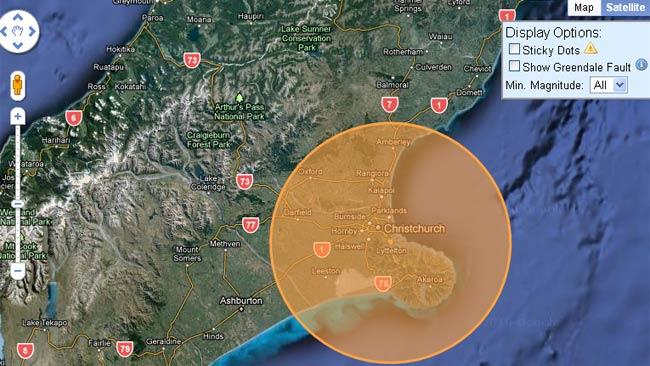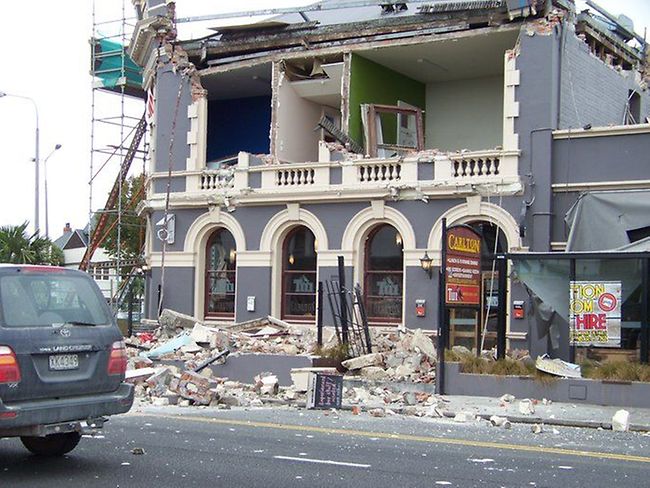Why this Christchurch earthquake was deadly
THE REASON why a earthquake with a lower magnitude was so destructive lies in how close the epicentre was to the surface.

GARY Gibson, Principal Research Fellow in the School of Earth Sciences at the University of Melbourne, explains why the 6.3 magnitude earthquake that struck Christchurch today was more destructive than the 7.1 quake that hit the city in September last year.
Just how bad is an earthquake of magnitude 6.3?
Gibson: A magnitude 6.3 earthquake will occur when an active fault area approximately 15km square ruptures, and one side moves about one metre relative to the other.
Its effect depends on how close it is (to a population centre), and ground shaking will be severe within 10 to 20 kilometres of the rupture.
The critical issue with this earthquake was that the epicentre was at shallow depth (5km) under Christchurch, so many people were within 10km to 20km of the fault rupture.
The magnitude 7.1 earthquake on September 4 (last year) was 30km to 40km west of Christchurch and ruptured mainly to the west.
Should we expect further large earthquakes in the area? Are aftershocks likely?
The September earthquake and this earthquake will have relieved the majority of stress in the regions in which they occurred, so another larger earthquake is unlikely.
However, aftershocks will certainly occur over the next few days and weeks which may cause further damage in weakened buildings, and will be very distressing for residents.
Is there a geological reason for multiple large earthquakes occurring within such a short time?
Earthquakes always cluster in time and space with some large earthquakes having foreshocks and most large earthquakes have many aftershocks.
Multiple large earthquakes are not uncommon, often when the main rupture of the earlier event is extended into an adjacent segment of the active fault.
(Continues below)

Why is the New Zealand South Island so geologically active?
New Zealand is on the tectonic plate boundary between the Pacific Plate and the Australia-India Plate.
The plate boundary is east of the North Island and crosses to the west of South Island.
Christchurch is not on the plate boundary, but is near to related secondary faults that result from the bend in the plate boundary to the north.
In the past 200 years, and in the long term, large earthquakes will occur less frequently in Christchurch than along the plate boundary.
However all earthquakes in the Christchurch region will be shallow, so the effect of a given earthquake will be worse than from a deeper plate boundary earthquake of the same magnitude.
How does this rate historically against other earthquakes?
This is by far the largest earthquake to have occurred in the Christchurch region in historic time.
Earthquakes larger than magnitude 6.0, usually deeper than this event, occur about annually in New Zealand, including one of magnitude 7.8 that occurred in the remote southwest of South Island in July 2009 with little damage.
Why is NZ seemingly more prone to earthquakes than Australia? Is a similar earthquake likely to occur in Australia?
New Zealand is more prone to earthquakes because it is on the plate boundary and has many plate boundary earthquakes. Large earthquakes occur infrequently in Australia.
In all of Australia a magnitude 6.0 or larger event occurs on average every ten years.
In the capital cities of Australia, a nearby magnitude 6.0 will occur on average every few thousand years. All earthquakes in Australia are at shallow depth, similar to those in Christchurch.
Is it possible to predict earthquake activity? How much better are we at predicting them and how good can we hope to get?
It is not possible to predict earthquakes, giving location, time of occurrence and magnitude, with certainty.
More Coverage
Aftershocks have continued at a decreasing rate since the September earthquake. Recent aftershocks have been east of the original rupture.
Are there engineering or town planning measures which could be improved to reduce the impact of earthquakes?
Building standards are already very high in New Zealand, but are upgraded as knowledge develops, and as higher standards become economically viable.

